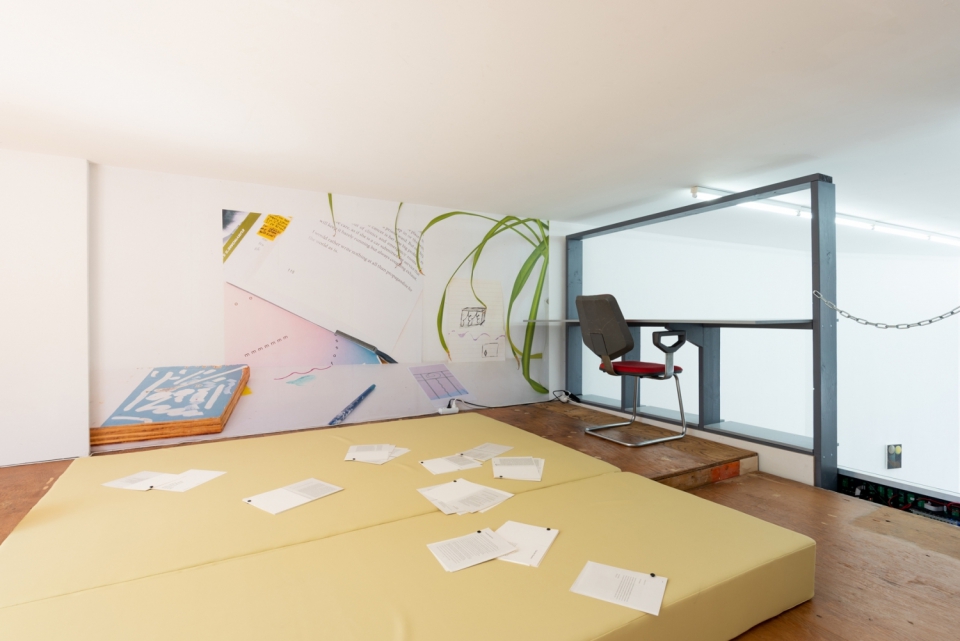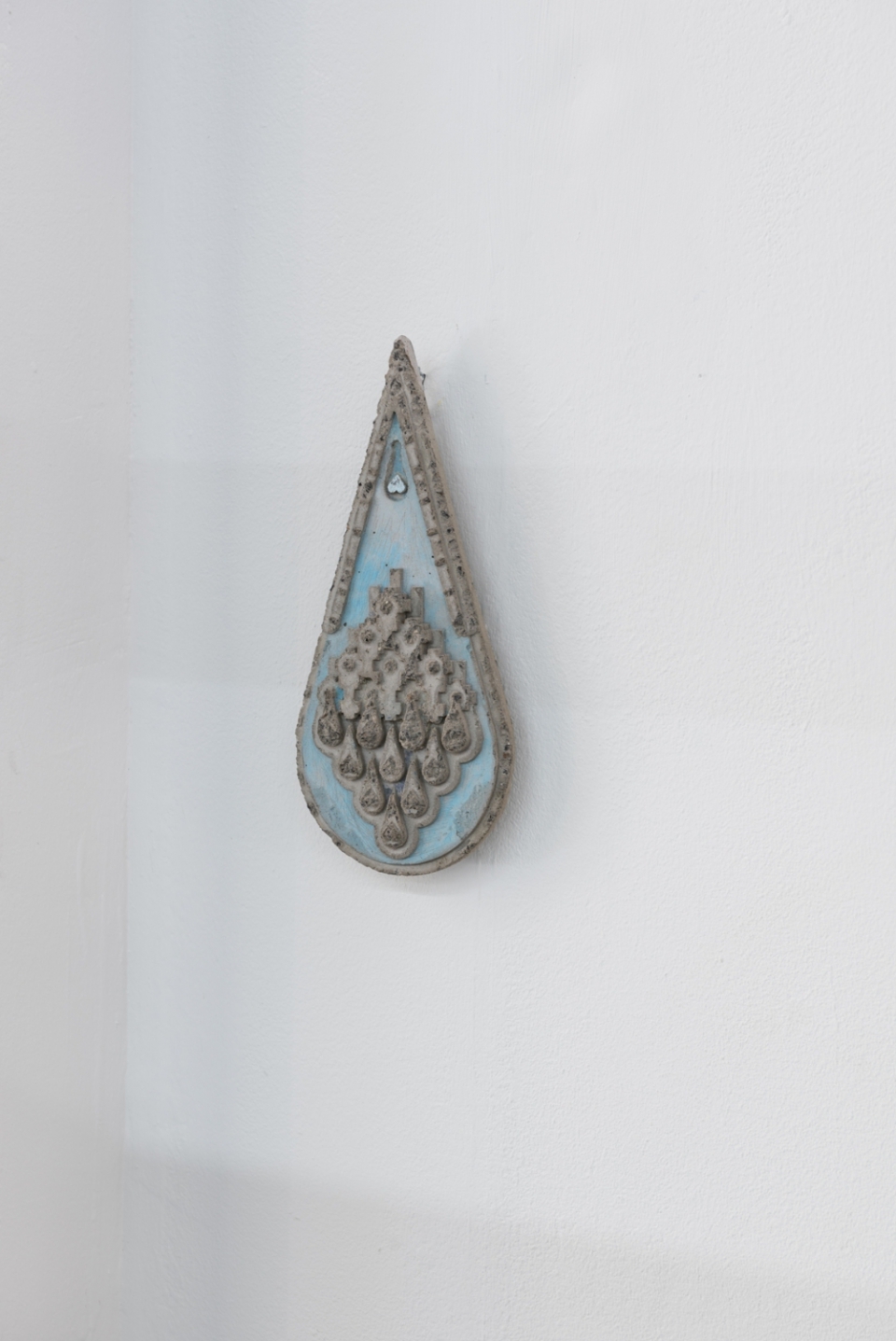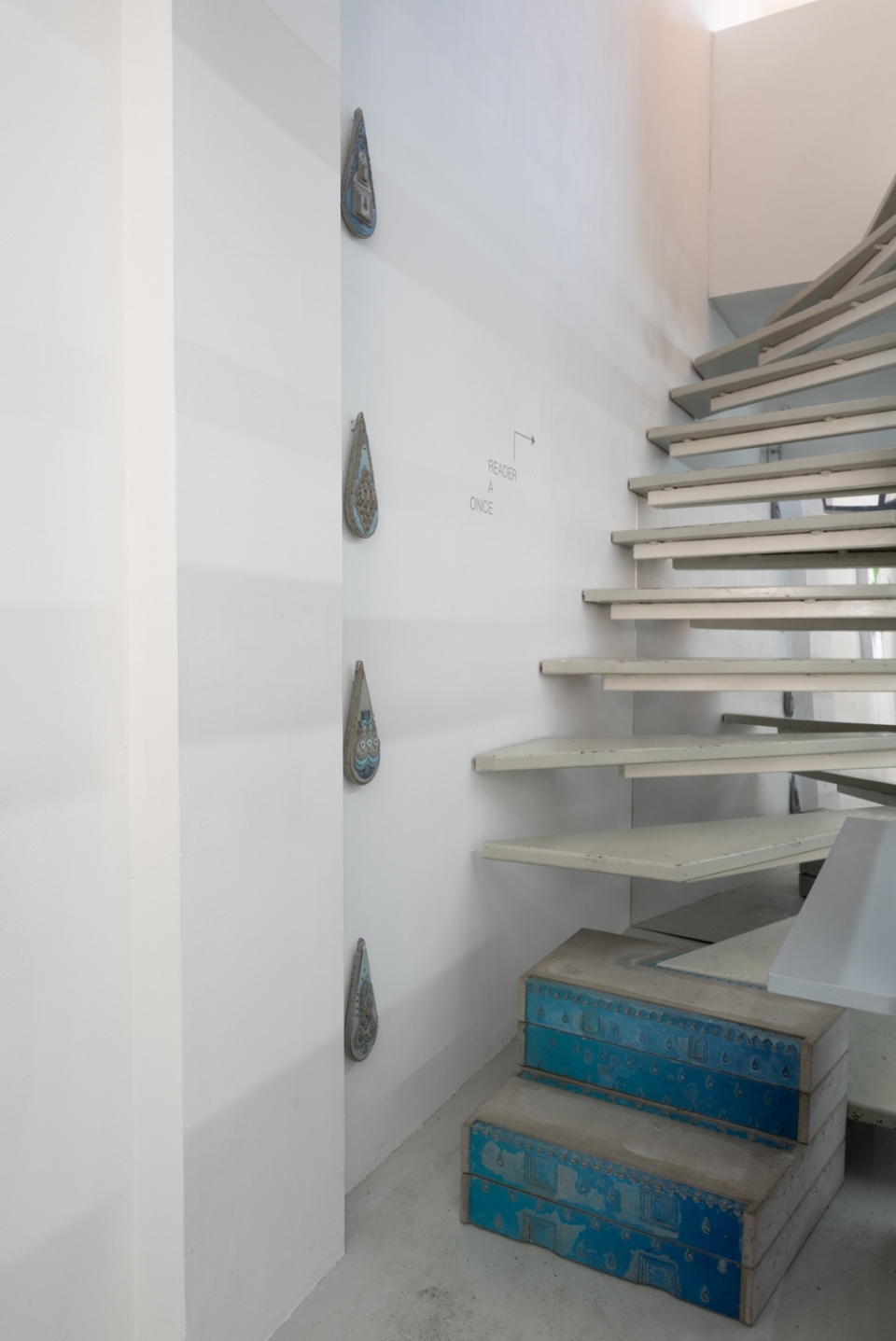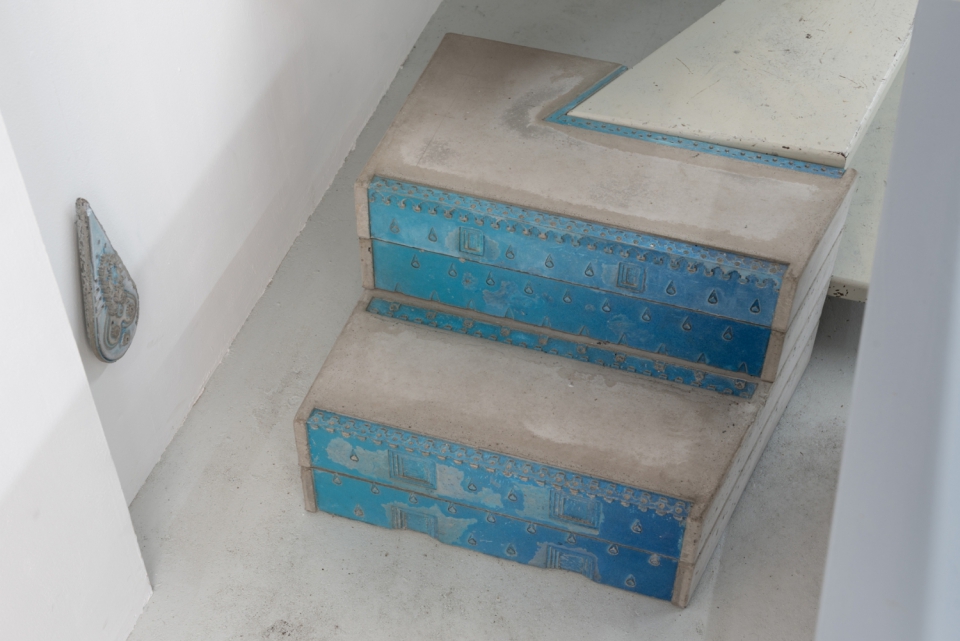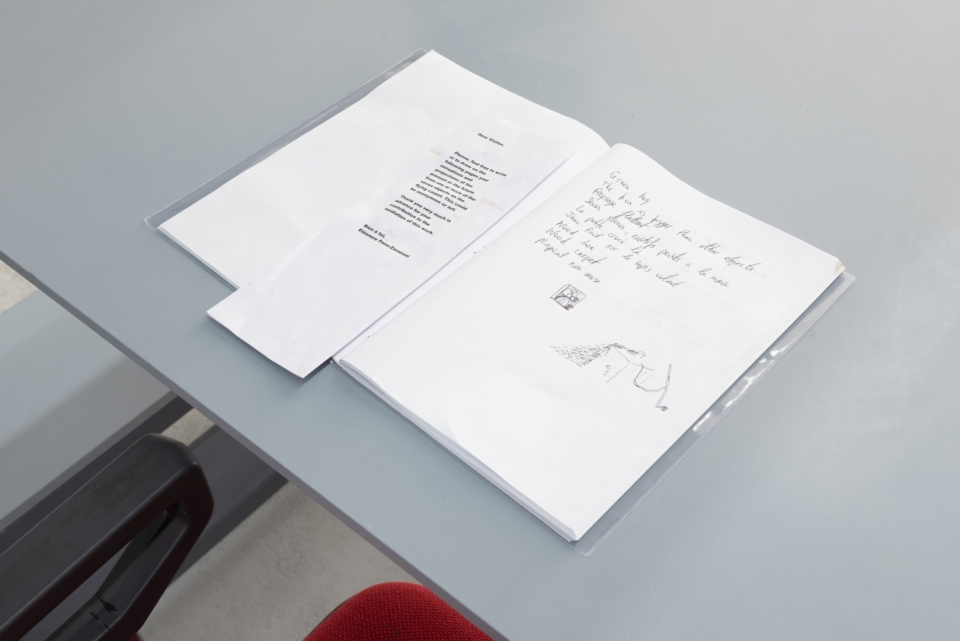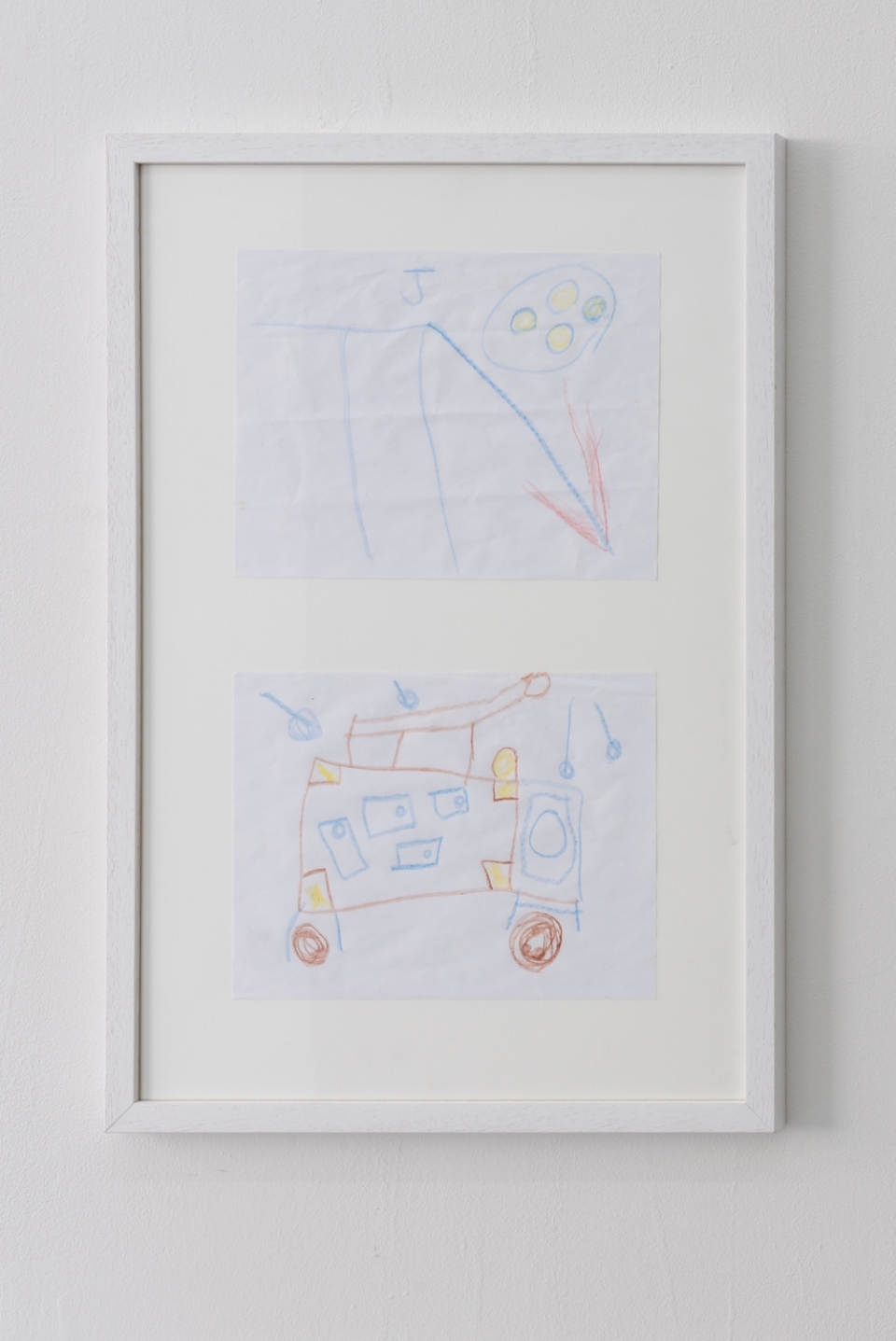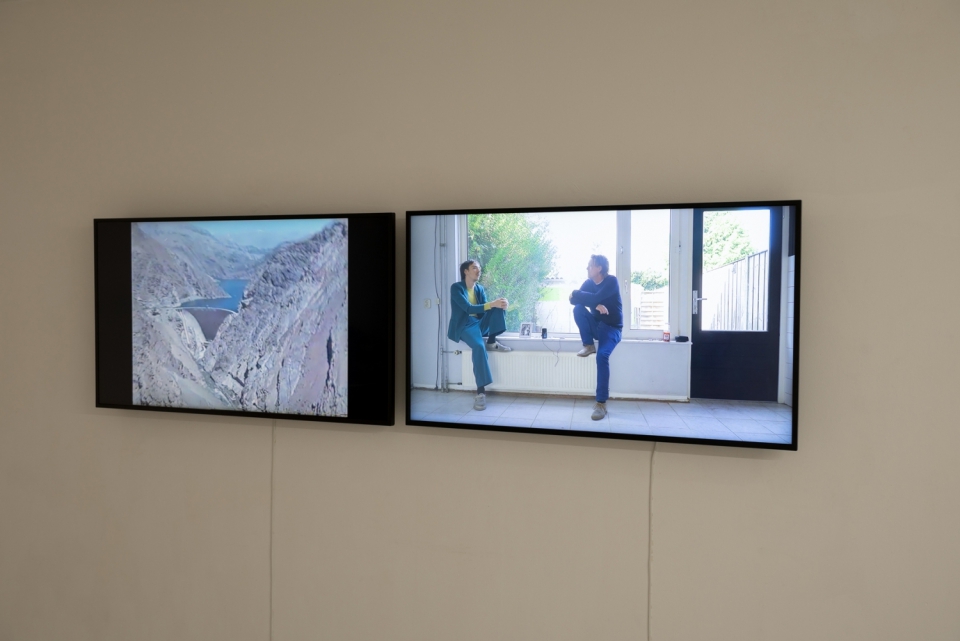Part 3: The Phantasy
26.03.2022, 18:30 – 23:00
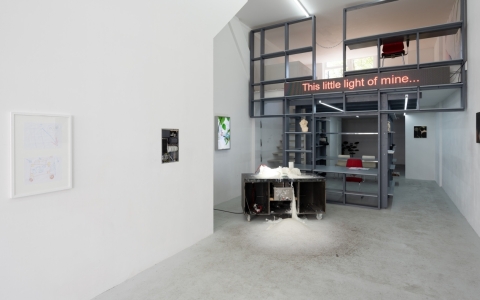

Exhibition view Part 3: The Phantasy, March 2022, Rib. Photo: Lotte Stekelenburg
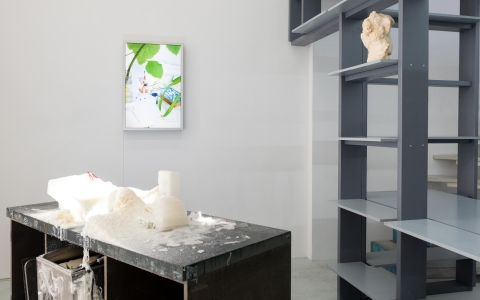

Exhibition view with works by Kianoosh Motallebi, Marije de Wit and Shahin Afrassiabi, March 2022, Rib. Photo: Lotte Stekelenburg
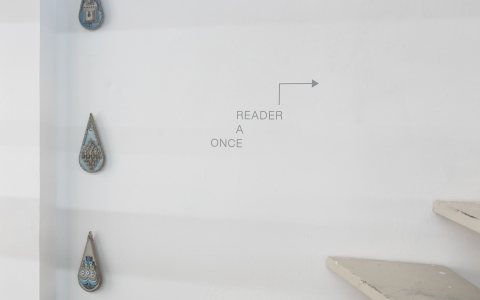

Olivier Goethals, Spatial Interventions, 2021. Photo: Lotte Stekelenburg
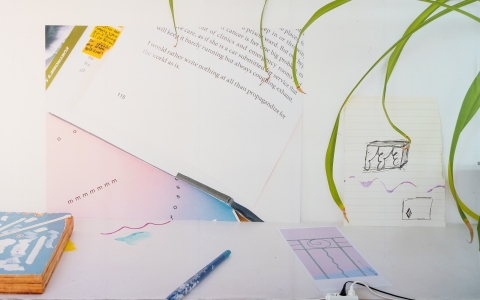

Marije de Wit, Once a Reader, 2022. Photo: Lotte Stekelenburg
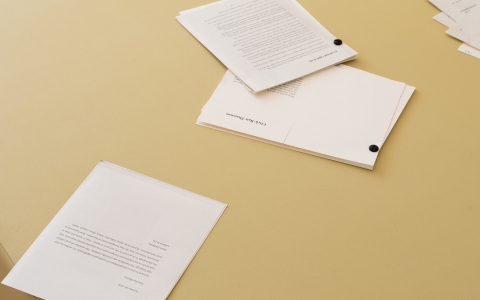

Marije de Wit, Once a Reader, 2022. Photo: Lotte Stekelenburg
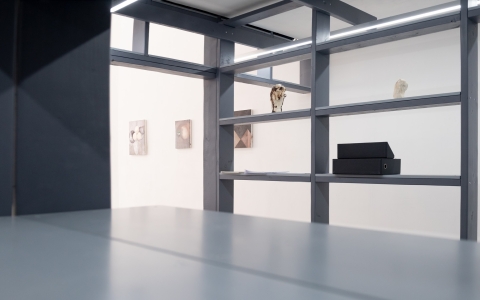

Paintings and sculptures by Shahin Afrassiabi in scenography by Olivier Goethals. Photo: Lotte Stekelenburg
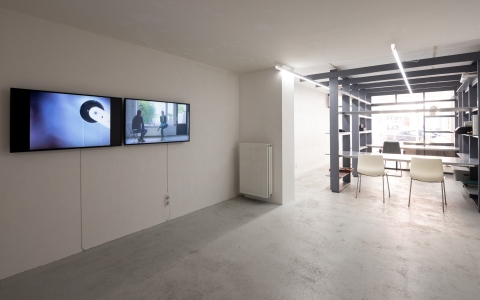

Exhibition view with works by Albert Lamorisse and Jack Segbars and Bo Stokkermans, March 2022, Rib. Photo: Lotte Stekelenburg
With works by Shahin Afrassiabi, Mathew Kneebone, Kianoosh Motallebi, Éléonore Pano-Zavaroni, Jack Segbars & Bo Stokkermans, and Marije de Wit. With concerts by Cold in Church, Bergur Anderson and Capitaine Sentiment.
When people gather around an object that makes them interdependent, what would that object be if potentially their connection to it is established through their non-aligned fantasies about it? In the meantime, although still not used to the blackouts here, we see them now as part of our productive life. We once conducted a candle-lit job interview, and during one of our dark opening hours visitors indicated that they would like to come back to see the show when the power is back. Whether the show is on or off one always misses something. Nature is often disguised in the operational part of art production, presentation, and communication. But how meaningless our artistic operations would be if not animated by phantasmagoria.
Kianoosh Motallebi’s paraffin sculpture From a Marvellous Faucet is growing out of its bounds.
Marianna Maruyama wrote a beautiful article on Part 1: Survival of the Fittest: the big toe of little big man, published by Nero Editions, titled The Body, The Plane, The Camera creating yet another image of the program. Reinier Vrancken will write a follow-up text on Part 2: Natural Selection.
Marije de Wit displaces her photographic work Damage Control in the space and has removed the light sculpture This Means That Much. She follows up on the reader Former Epiphanies, Impressive Moments containing quotes which reflects the conversations on art, its politics and its relation to (end)durance, that went into making the program. Opening up our mezzanine, in Once a reader, visitors can read the essays, poems, and chapters that the quotes were taken from. Visitors get glimpses of the work of Anne Boyer, Don Mee Choi, Moyra Davey, Joy Harjo, Lyn Hejinian, Chris Kraus, Marianne Morris, Fred Moten, Alice Notley, and Juliana Spahr. A photo that features a quote by Anne Boyer is made into wallpaper and serves as a backdrop. The furniture is designed by Olivier Goethals and manufactured by Louis XvX.
Éléonore Pano-Zavaroni comes back with some of the artists she invited for Afspraak Future, to reactivate the work and her platform with After Life with Friends—by Fabrice Croux, Ash Kilmartin, Fabien Renneteau, Coralie Guillaubez, Romain Bobichon, Akim Pasquet, Eléonore Pano-Zavaroni & friends—with jingles set up especially in honor of The Upcoming Apocalypse and the end of Life. Celebrating Afspraak Future!
Mathew Kneebone introduces two drawings from his ongoing collection of cultural artifacts, courtesy of James and Jim Yu. On 24 October 2021, a large-scale power outage afflicted the Bay Area, triggered by a powerful storm that swept across Northern California. The storm arose from a seasonal shift occurring during the autumn months when intense barometric pressure can suddenly drop. With this fall in pressure, the immense moisture that drifts in the air from warm tropical waters across the Californian coast-described as an “atmospheric river”—is dumped onto the state, resulting in flooding accompanied by gale force winds. In this case, power was lost when tree branches broke away, severing overhead power lines. During the event, residents turned to social media to share their experience through videos and images. Among these were two drawings by James Yu (4 years-old), posted by his father Jim, inspired by a sparking electrical wire that James saw fall to the ground during heavy rainfall. He then drew an emergency PG&E (Pacific Gas & Electric) truck to go and mend it.
In Part 2: Natural Selection we have replaced two paintings by Shahin Afrassiabi. For the last two decades Afrassiabi‘s output has taken many forms yet always in a relation to painting‘s various genres. The new paintings seem to be portraits, still-lifes and landscapes simultaneously and in different registers. He says of his work: “I am mostly motivated by what I don't see.”
Work and Shadow-work, whispering vs speaking is a collaboration between Jack Segbars and Bo Stokkermans, connected to Rib’s program. Their aim is to probe the possibility of artistic work within the present conditions. This question is approached via the life and art binary, which is the historic form of art in our time. They ask, if we understand art as that activity that aims to reflect on the conditions of life in which art is made, how is such a conception possible in the condition of full subsumption of life and art in neoliberal capitalism?
Both artists have taken—each differently—their own practices as case to examine this question, mobilizing the figure of the artist and artistic work within present-day production. For Stokkermans, this question is currently framed via the notion of (self)care: how can we understand, synthesize and radicalize art and life as a notion of caring work? For Segbars the focus lies on the institutional formation of art and the need to include a broader notion of authorship within the system of art. For both how the object of art functions and is produced within the field of art, is a critical focal problem.
This includes the underlying problem of the subject-object relation (and subsequent division of labor) that keeps the exceptional economy of art and the exceptionality of the artist figure in place. These issues are investigated by a continuation of the conversation between Stokkermans and Segbars which takes the dialogical encounter between the two practices as a regenerative model.
Within this model Rib functions as a nodal hub where this conversation is performed publicly, hereby questioning this idea of productivity within the current conditions. For Part 3: The Phantasy, Stokkermans and Segbars replace for the first time in the program The Lover’s Wind the film by Albert Lamorisse with their own film documenting the moment after emptying the house of Stokkermans mother who recently passed away during a conscious decision to end her life. This film is juxtaposed with the postscript to Lamorisse’s untitled film, the making of which lead to his death.
Shahin Afrassiabi was born in Tehran. He studied art at Goldsmiths University in London. He works in Andalucia, Spain. Selected solo exhibitions include Paintings 2016–2018 at Soy Capitán, Berlin (2018), Radical Substance at Soy Capitán, Berlin (2015), Theory of Life at MOT International, London (2012), Subject to Form at Limoncello Gallery, London (2010). Afrassiabi’s work was part of several group shows, such as Been Caught Stealing at Kunsthalle Exnergasse, Vienna (2014), Showcase Preview at South London Gallery, London (2004), Transmission Gallery, Glasgow (2002), Early One Morning, Whitechapel Gallery, London (2002), and ICA, London (2000).
Steve Van den Bosch focuses on the seemingly expressionless, tacit and unspectacular. His work results from zooming in on the boundary between invisibility and pure materiality and puts the implications of artistic production, exhibition and interpretation into perspective with a taste for the absurd. By erasing, doubling, blurring, reversing or reconnecting the elements that define a work of art, objects and situations are created that continually undermine their own status as works of art and almost casually refer to the surrounding conditions from which work can emerge and in which it is subsequently exhibited. Van den Bosch was a resident at HISK in Antwerp (1998–2001) and the Rijksakademie van beeldende kunst in Amsterdam (2006–07).
bostokkermans1995 is of it’s time. being one of many who was born into conditions (Tilburg-Netherlands) and who continously tries to survive and (ex)change based on the performative makeability of living.
Olivier Goethals studied Architecture and Urban Development. He is working simultaneously as architect and artist. In his wide practice he researches the connection between space and consciousness. Olivier made spatial interventions and artistic installations for venues, such as Het Nieuwe Instituut Rotterdam, Z33 Hasselt, Extra City Antwerp, Be-Part Waregem, SMAK Ghent & Palais De Tokyo Paris. Previously he worked as a freelance senior architect for De Vylder Vinck Taillieu (2008–2016). Since 2010, he is teaching at the KULeuven Architecture Department. He was a guest critic at RU Ghent faculty of Architecture, LUCA School of Arts Experimental Studio and ETH Zurich faculty of Architecture. Goethals is in charge of the design and implementation of all spatial interventions for the art collective 019.
Mathew Kneebone’s practice is founded on research into uncertainties surrounding technology, often combining different histories, myths, and folklore. His work touches upon various media including drawing, electronics, writing, sound, and performance to reconfigure or re-contextualize certain technologies, exploring an ambivalent blend of past and present. His work has recently been exhibited at Kunstverein, Amsterdam; 019, Ghent; Extra City, Antwerp; and Cloaca Projects, San Francisco. His writing has been published in Trigger Magazine, OASE Journal for Architecture, The Bulletins of The Serving Library, Another World, Umwelten, among others. He has given talks and workshops at Minnesota Street Project, San Francisco; V2_ Lab for Unstable Media, Rotterdam; Central Saint Martins, London; Sandberg Instituut, Amsterdam; San Serriffe, Amsterdam; EKA Gallery, Tallinn; Sitterwerk, St. Gallen; UEL, London. He teaches at California College of The Arts, San Francisco, where he is thesis writing supervisor.
Kianoosh Motallebi (UK, 1982) is a visual artist based in Brussels. He completed his master’s degree at the Slade School of Fine Art in London. Subsequently he was a resident at the Rijksakademie van Beeldende Kunsten. Motallebi took part in The Physical Center (Guest Projects, London, presented by Yinka Shonibare), Erased Walls (Berlin) and Rijksakademie Open 2011. His work has also been shown at the Van der Mieden Gallery (Antwerp) and he was artist-in-residence at Very Real Time (Cape Town). In 2017 he designed the coin De Stelling van Amsterdam Vijfje 2017 Zilver Proof. He is currently part of the artist collective Level Five (Brussels).
Jack Segbars is an artist based in Rotterdam. He is engaged with the conditions and parameters that define the politics of art production. The interconnections between the different positions: critic writer and visual artist are mobilized as artistic investigation. In 2009 he produced the publication All Around the Periphery (Onomatopee) that deals with the overlap of positions and domains. In 2012 it was followed by Inertia (Onomatopee) a travelogue of visits to Palestine that deals with artistic engagement. Segbars regularly writes articles on art and art-related subjects for Metropolis M, Witte Raaf, Parse and Open! He completed his PhD research at the PhDArts program of Leiden University the Netherlands.
Marije de Wit lives and works in Rotterdam. A selection of her recent activities are: artist talk in the context of artist in context, Netherlands Film Academy, Amsterdam; There Is So Much Thinking to Be Done, Wiels Project Space, Brussels; site-specific photo installation, Clermont-Ferrand (FR), thanks to Artistes en residence; and ESACM, VERY|BODY|TIME, edition of 25 posters, spread over free pasting places in Rotterdam.
Éléonore Pano-Zavaroni teaches art and art history at Esaaa (Annecy Alpes School of Art). She runs the art platform 5OU6ÎLES and the magazine Idoine and is one of the members of the scientific committee of the biennial Carbone, Saint-Etienne. Some of her exhibitions are Living Fair with Nayoung Kim, Changnyeong Bugok Spadium, South Korea (2019), Rendez-vous La Havane in Centro de arte Wifredo Lam, Cuba (2018) and Rendez-vous/Biennale de Lyon, Institut d’art contemporain, Villeurbanne (2017). She curated Eutrapelia, Back Lane West, Redruth, UK (2018) and published the monographic edition Entretien, Martial Déflacieux, Éléonore Pano-Zavaroni, Virginie Bobin, Stéphane Sauzedde, Esaaa éditions (2017). She is currently preparing a solo exhibition for next year at the Flaine Art Center and an artist’s book Rendez-vous.
Pano-Zavaroni has invited the following artists. In her words:
“Danaé Jérôme is a goddess who speaks cat. She is the intensity of the present. She radiates and connects. She presents herself as a designer or an artist, depending on the context and the person she is talking to. She acts, with no sense of hierarchy between situations. Fully there. Fully with—whether in a neighbourhood knitting association, a textile design project, or an art residency.
Anchored in the cosmos, Jérôme Tillié makes experimental music, original graphic design, unexpected exhibitions, the reception of a hotel. He has a sense of display and presentation that is as sensitive as it is subversive in its sincerity. This is beauty. In Jérôme Tillié‘s sentences, words appear where we least expect them and vice versa.
When I met Akim Pasquet, he was looking for ways to extract energy from stones. I then discovered his strength in creating art spaces where everyone is welcomed and finds their place. He federates and explores, driven by questions of affect and energy, their circulation in intimacies and in ensembles. He is a curator, artist, teacher and director of the Limbes art space and the Carbone Biennial.
Fabrice Croux, attentive, makes piles, stacks. He states that art is to increase the sensitive and understand in a non-verbal way. He eats things, techniques, and other edible foods. He bathes in time, sprinkled with magic and strangeness, making objects that are other.
Romain Bobichon has an experimental painting practice. I often have the impression that he creates an infinite painting that develops in many dimensions. It is a relationship to the world rather than a medium. He produces things that can be manipulated, things that can be thought of with the body. Moreover, he also makes music or, with other acolytes, a series of fiction.
Ash Kilmartin does a lot of collaborations; she has a sense of staging and dramaturgy. She is a storyteller, sculptor, performer, radio broadcaster, gardener, chef, and runs Life.
Maziar Afrassiabi is an artist, he makes poems in spite of himself, is attentive to dreams. He unfolds an artistic practice, and a way of thinking with others, through his curatorial practice, mainly at Rib, which he founded and directs. For some time now he has been making beautiful sculptures, between the Merzbau and Valentine Schlegel.”



